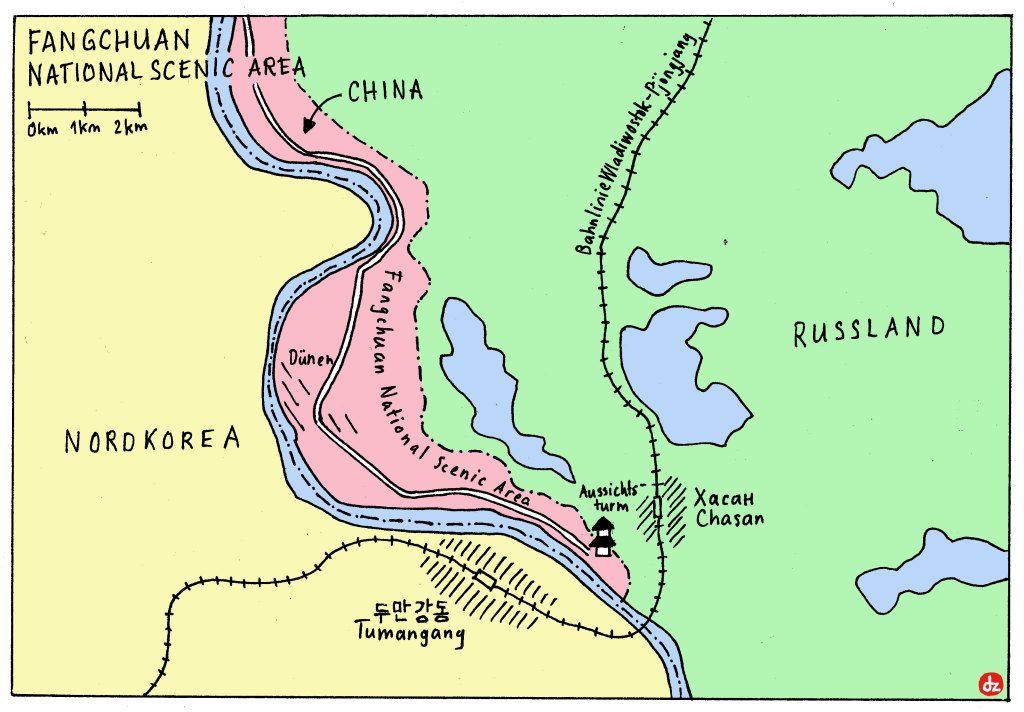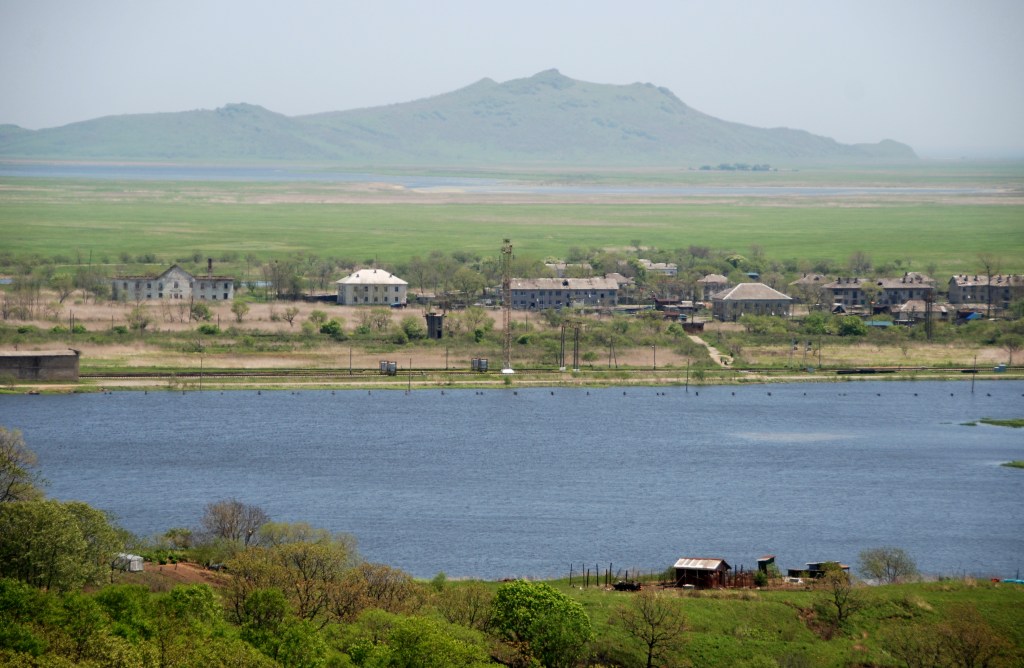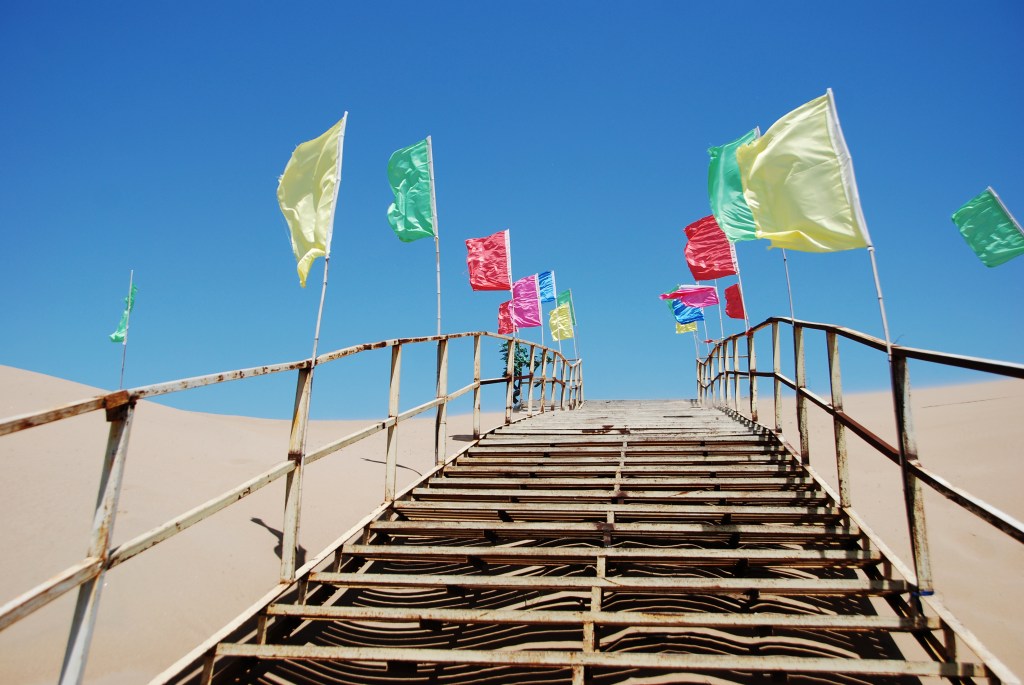On the border of Russia and North Korea, the People’s Republic of China owns a long strip of land along Tumen river. Instead of keeping this unique piece of land secret, China decided to make it a tourist attraction. Fangchuan National Scenic Area (防川国家风景名胜区) is a strange mix of Disney World, national park and border viewpoint. Busloads of tourists – including many Russians – are brought in from nearby Hunchun. There is an entrance gate, where a fee of about 10 Euro has to be paid, and subsequently several luna park like attractions – and more importantly, a panoramic tower very close to the tripoint with North Korea and Russia.

I visited this area in 2013. As an individual traveller, it was not so easy to get there. There is no public transport to the area, since tourists are usually brought there by their tour company. So I hired a taxi – which was stopped at a checkpoint approximately 20 km before Fangchuan. Luckily, I managed to convince the Chinese police that I was just intending to visit a tourist place and that Russian tourists did likewise.

Park-owned busses ship the tourists first to the very end of the Chinese strip of land – not to the actual tripoint, which is in the middle of river Tumen. Even though the place provides no view of the neighbouring countries, there are the border poles of Russia and China and some cold-war like border fences.

Few people share my hobby of visiting borders, therefore I am used to enjoy such places alone. Obviously, this was quite different in Fangchuan. This picture shows the approach to the border poles shown above, including a portion of the border fence.

500 Meters from the tripoint, the Chinese constructed this panoramic tower to provide tourists the best insight possible into the secretive neighbours and the whole border area – which is actually quite beautiful.

This is the view towards the south from the panoramic tower. The most remarkable sight is the Friendship Bridge, which provides the only direct link by land from North Korea to Russia – and thereby the only alternative land border crossing of North Korea except for China. It is a railway bridge, a part of the railway line Vladivostok – Pyongyang. At the time of my visit (2013), it was possible to travel from Basel in Switzerland to Pyongyang with changing trains only in Moscow, as there is a weekly through coach from Moscow to Pyongyang. Unfortunately, the night train from Basel to Moscow does not circulate anymore. The bridge was particularly important for former Korean leader Kim Jong Il, who due to his fear of flying did all his foreign visits by his own special train.

A glimpse into North Korea: View of the train station area of Tumangang. Apparently, this is where the border controls on the Moscow/Vladivostok – Pyongyang trains take place. Here is a long and fascinating report by an Austrian who did this trip in 2008. My own North Korea travel report is available on this blog (in German).

View towards Tumangang town on the left side of the river, a couple of kilometers away from the panoramic tower. Tumangang belongs to Rason Special Economic Zone, one of the most easily accessible parts of North Korea: It is possible to do day trips from China to Rason.

This is the little town of Khasan (Хасан) on the Russian side of the border. Khasan is an utterly remote outpost of Russia with only 700 inhabitants. Even for most Russians, their country ends in Vladivostok in the extreme Far East (and of course in Magadan, further north). But from Vladivostok, it’s another day ride south to the North Korean border in Khasan – an enjoyable ride through a hilly area which does not look Russian at all – and with almost no settlements. One of those forgotten places which make travelling to border areas so worthwile!

Back in 2013, China had grand plans for Fangchuan, as shown in the advertisement billboard. I haven’t found out yet how many of them actually materialized meanwhile – Google Maps doesn’t reveal much about it. But there is certainly still no trace of the three-country golf course advertised in the bottom right of the billboard. That would be quite a border experience!

I skipped most other attractions of Fangchuan, since I really came for the border views. On my way back to Hunchun, however, the taxi stopped at the dunes – another unique sight in Fangchuan. Indeed, it was quite impressive to see this little desert in the middle of a green and fertile area.

Another view of North Korea: Wongchong border crossing is located approximately 15 kilometers north of Fangchuan – the place where you can cross legally into North Korea for day trips to the Rason area.
